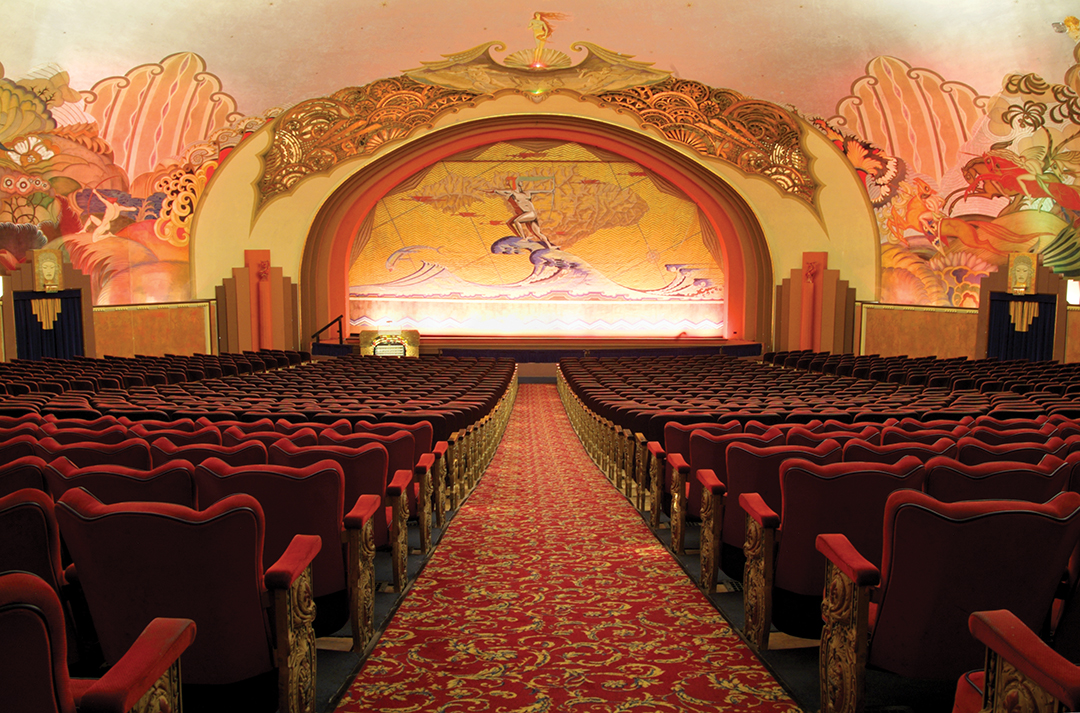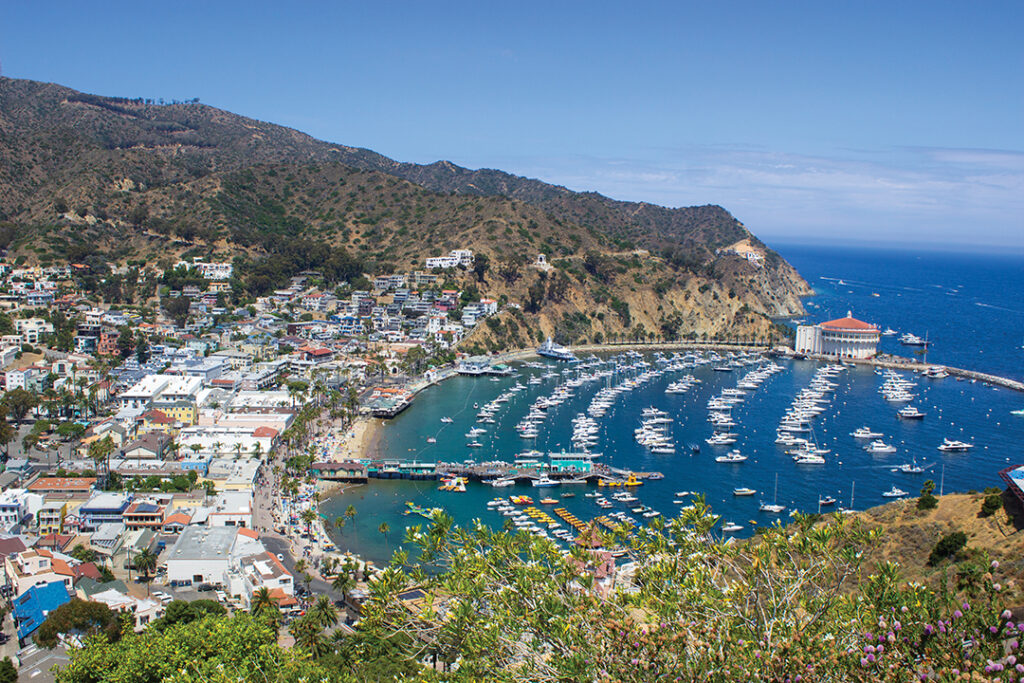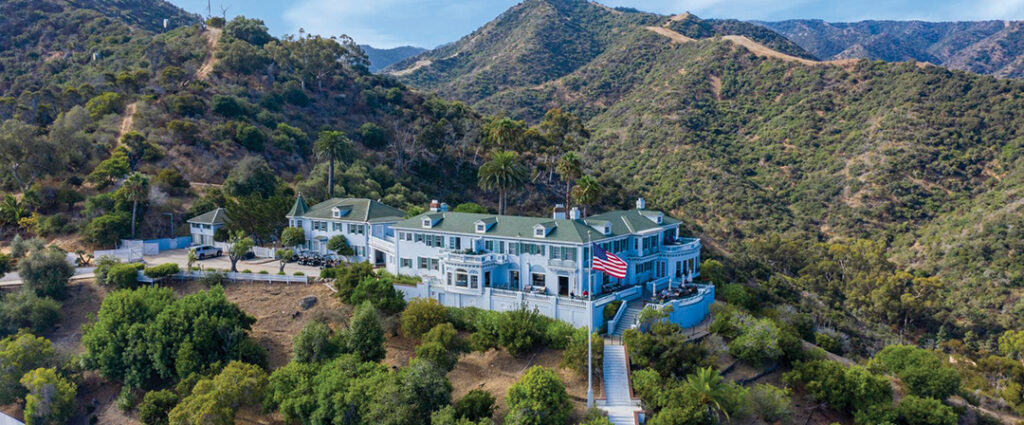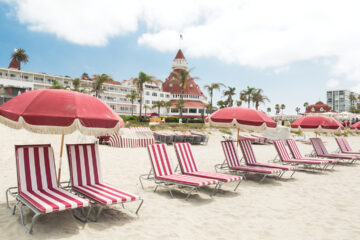Soak up the sun and history on Catalina Island
From the earliest inhabitants to Hollywood Glamour and conservation, discover Catalina Island’s rich historical legacy

Catalina Island, long known as a sunny playground for tourists and boaters, also has a fascinating — and colorful — history. Its earliest inhabitants were Native Americans, known as Pimugnans. In 1542, Portuguese explorer Juan Rodriguez Cabrillo, credited with discovering what is now San Diego Bay while sailing for the Spanish crown, was also the first European to reach Catalina’s shores. He named the island San Salvador. But more than 50 years later, Spanish explorer Sebastian Vizcaino “re-discovered” the island, calling it Santa Catalina in honor of St. Catherine of Alexandria, the patron saint of philosophers. The island was known for pirates, hunters, smugglers, gold miners, and sheep herders. In 1846, Mexican Governor Pio Pico gave the island to Thomas Robbins, a naturalized Mexican citizen living in California, and over the years, it changed hands several times.
In 1887, George Shatto, a real estate speculator from Michigan, began developing the destination into a resort town called Avalon. His sister-in-law suggested the name, a beautiful island referenced in “Idylls of the King,” a poem by Alfred, Lord Tennyson. But after just five years, Shatto’s big dreams went bust and the Banning brothers — William, Joseph, and Hancock — bought the island and began building hotels, roads, and tourist attractions. In 1915, a devastating fire ravaged Avalon, forcing the Bannings to sell to a real estate investment group that included Chicago chewing gum magnate William Wrigley, Jr.

Wrigley, by the way, initially sold soap, giving away free packets of the gum as incentives. But the gum, at just pennies a pack, proved to be more popular than the soap! Juicy Fruit, Doublemint, and Spearmint became popular, and to this day, fences around the harbor are painted Spearmint green.
Wrigley and his wife, Ada, were smitten by the island and eventually gained full control of the Santa Catalina Island Company (now the Catalina Island Company, run by Wrigley’s heirs). Wrigley envisioned a bustling playground for those loyal to the Wrigley brand: “The tired shopgirl, the artisan, the clerk, the Boy Scout,” and had mega bucks to back that up.
Wrigley spent millions on infrastructure and such tourist attractions as the iconic Catalina Casino overlooking the Avalon Marina which opened to great fanfare on May 29, 1929, marking the tenth anniversary of Wrigley’s purchase of the island. It drew 10,000 partygoers, many who had arrived by steamships which he had helped to finance.
Despite its name, the Casino, a massive, 12-story building of poured concrete, was never used for gambling — “casino” is Italian for “gathering.” But on the lower level, the Avalon Theatre, among the first in the world built for “talkies,” features a domed ceiling, more than 1,000 seats, and stunning Art Deco murals by John Gabriel Beckman. The acoustics were said to be so groundbreaking that New York City’s famed Radio City Music Hall took note, reportedly dispatching engineers to Catalina to see and hear it for themselves. The Wrigleys even had their own private screening room overlooking the theater where Hollywood director Cecil B. DeMille showed his latest films. The theater continues to present current and classic films and live performances throughout the year.
Today, the VIP backstage Casino tour also includes a look at the restored 20,000-square-foot ballroom, the world’s largest without supporting pillars, where thousands once danced to the Big Band sounds of the day — Artie Shaw and Benny Goodman among them. The ballroom also hosts major events that include the Catalina Conservancy Ball, Catalina Island Jazz Trax Festival, and New Year’s Eve festivities. It’s available for weddings, and corporate and private events as well.
The Catalina Island Country Club is also open for special events. It includes a lovely terrace, dining room, and a bar decorated with vintage photos of famous Chicago Cubs, movie stars, and memorabilia. Wrigley, a consummate promoter, once owned the baseball team, and for 30 years held spring training on Catalina, which, of course, brought plenty of publicity to the island playground.
Over the years, Catalina has been popular with Hollywood celebrities including Humphrey Bogart, James Cagney, Charlie Chaplin, John Wayne, and Marilyn Monroe. Before Monroe became a star, the 16-year-old Norma Jeane Baker was married briefly to James Dougherty, a merchant marine who taught ocean safety on the island. Baker divorced him two years later and a photographer soon discovered her, launching her career as an actress.
The island has served as a backdrop for hundreds of movies, including Mutiny on the Bounty, starring Clark Gable and Charles Laughton, which won Best Picture at the Academy Awards in 1936. Authors also frequented Catalina’s shores: Edgar Rice Burroughs of Tarzan fame, Jack London, William Faulkner, and Zane Grey, the sportsman and novelist whose former home above Avalon Bay is now the Zane Grey Pueblo Hotel.
It has been written that Ernest Hemingway got the idea for his novel The Old Man and the Sea while fishing for swordfish with members of the Tuna Club off Catalina’s coast. Founded in 1898 by Dr. Charles Frederick Holder, the private club has long promoted ethical angling practices and strict water conservation around the island. The club has also been credited with big game fishing and the first rod-and-reel catches of broadbill swordfish and tuna. According to Catalina’s Museum for Art & History — a must stop when visiting the island — Holder himself used a rod and reel to catch a 183-pound leaping tuna which had towed his boat for more than ten miles. This was no “fish story.” Holder battled the mighty fish for more than three hours and 45 minutes before finally reeling it in. Famous Tuna Club members included Cecil B. DeMille, crooner Bing Crosby, and actors Charlie Chaplin, Stan Laurel, and Jackie Coogan.
Nearby on the marina, the Catalina Island Yacht Club, now headed by Commodore John Wells, celebrated its 100th anniversary in August. Members of the Tuna Club founded the yacht club after their wives lobbied for a place where everyone could socialize, women included. The club’s opening day on August 3, 1924, later dominated the pages of The Catalina Insider newspaper. Charles H. Smith reported that “Avalon Bay probably never had so many beautiful pleasure craft floating on its placid waters on a Sunday afternoon, and they were quite literally all dolled up with signal flags and bunting.” The formal opening was preceded by an elaborate dinner for more than 130 yacht club members at the former Hotel St. Catherine.

James Cagney, Johnny Weissmuller, Daryl F. Zanuck, Walter Huston, Tom Mix, and Ed McMahon were just a few of its notable members. William Rigley Jr. was the club’s first honorary member, given a solid gold membership card “in view of the interest he has shown in furthering the interests of yachting,” according to CIYC’s records.
In 1975, the Wrigley heirs deeded 42,000 acres — nearly 90 percent of the island — to the Catalina Island Conservancy which they helped to establish. The family continues to own the Catalina Island Company, which operates hotels, restaurants, event venues, and the six-bedroom Mt. Ada, once the Wrigleys’ hilltop island escape, offering stunning views of Avalon Bay. His heirs are committed to carrying on Wrigley’s vision “to create a world class resort.” 800.626.1496, visitcatalinaisland.com





Comments